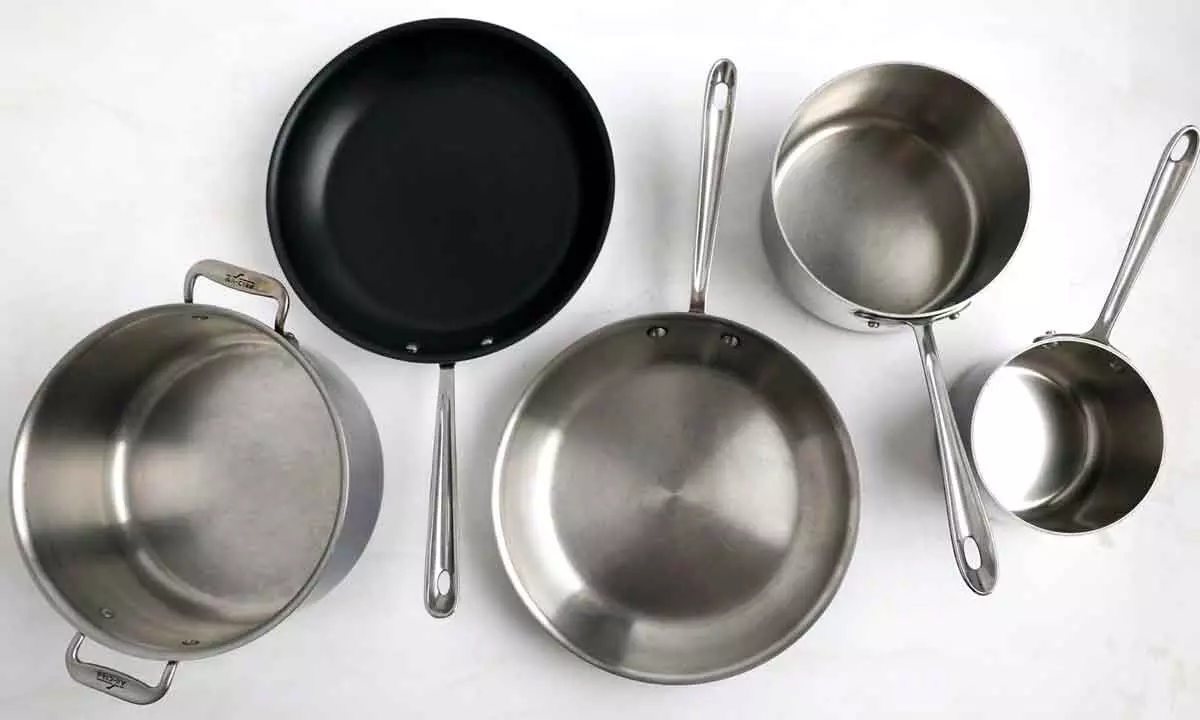Things to remember about cookware when preparing a meal

It is the inexpensive crown of durability in any kitchen.
Stainless steel
It is the inexpensive crown of durability in any kitchen. However, always check if it is marked "Food Grade'' or not. If not food grade, then, 'nickel' a common metal used as an alloy in stainless steel cookware might leach into your food. Some common names which shine in the realm of food-grade stainless steel are Nippon Steel (Japan). Nickel in food can be extremely detrimental to health.
But if it's food-grade, then your cookware is completely non-reactive, highly durable and accompanies easy maintenance which makes it the most versatile cookware material in the kitchens around the world.
Cast iron and iron cookware
Slow cooking is great for cast iron and iron cookware. This function facilitates the release of iron in your meals, ensuring excellent results. With such cookware, even heating is achieved, which helps to preserve food nutrients and enhance the flavour of any meal.
When you cook with cast iron, a little bit of the mineral is transferred from the pan to your meal and then to your body. Unfortunately, because the quantity of mineral transfer is so minor, it's difficult to argue that skillets and pans are a significant source of iron.
Aluminium/Anodized aluminium
A long-standing kitchen staple, aluminium forms the bulk of cookware in any kitchen. But always remember that it's highly reactive with acidic foods such as tomatoes, vinegar, and citrus; hence, it can also alter the food's flavour and appearance.
However, aluminium cookware that has been anodized (hardened through a process that renders it nonreactive) or clad in a non-reactive material, such as stainless steel or a non-stick coating, does not leach into or react with foods. Additionally, excellent thermal conductivity, affordability, and exceptionally lightweight and scratch-resistant properties make it a "Super Material" for cooking.
Ceramic cookware
Ceramic cookware evenly distributes heat throughout the cooking surface. As a consequence, you won't have to worry about food burning in certain parts while remaining undercooked in others. Many kinds of ceramic cookware can withstand extremely high temperatures because the enamel covering is formed of molten glass powder and topped with a porcelain glaze. As a consequence, it's perfect for searing meats and other products that need a lot of heat. Ceramic cookware is one of the most long-lasting cookware options.
Non-stick cookware
A souvenir of the 21st Century, non-stick pans are perhaps home to every kitchen in the world. Always check if your non-stick is PFOA free, lead-free and cadmium free. Remember that non-stick coatings can be made up of different types of materials which are toxic when ingested.
Also, the non-stick coating chips off when scratched by rough-edged or metal utensils or abrasive scouring pads.

















